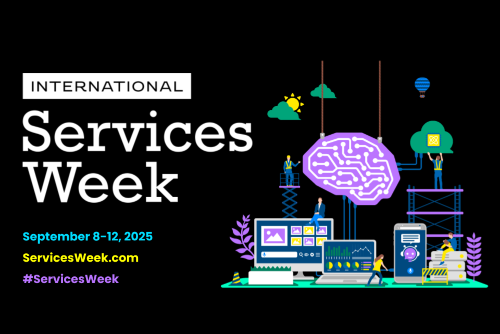Worried about the economy? Here's how leaders safeguard their businesses

Services leaders have spoken. The state of the economy is reported as one of the top external challenges (along with AI) facing their business — outranking competition and a tight market for skilled professional services labor. That’s just one nugget found in the recent Global Service Dynamics Report, based on a survey conducted by market research firm Dimensional Research of over 1,000 professional services organization (PSO) leaders and executive decision-makers across key global markets.
There’s no denying businesses are operating in sensitive times. Whether or not another economic shift is around the corner, it’s generally good practice for businesses to be prepared for periods of economic uncertainty.
Based on the experience of working with numerous customers, here are some of the best ways you can do just that.
Diversify your revenue streams
Investors have traditionally seen the diversified portfolio as a key way to maximize returns while minimizing risk. Businesses should see their revenue streams in the same way. In a slow-down period, businesses that have diversified their revenue models will have more stability than businesses reliant on, for example, sales of a single product. Even worse would be dependency on a single large customer. Instead, healthy businesses should aim to develop a variety of revenue streams, ranging from established, bread-and-butter models to more experimental product and service innovations.
Learn how
Know your customers
Every customer is important to your business, but at any point in time, you will have different relationships, opportunities, and challenges across your customer base. The highest performing businesses will be disciplined around revenue tracking, timely nurturing, and spotting market needs. With the right systems and processes in place, you can determine which customers are most profitable and then track leading indicators that may signal risk of attrition. The sooner you have this knowledge, the sooner you can act.
By the same token, you should be able to determine which customers are least profitable so that you can take action sooner than later. Perhaps it’s simply a matter of changing the price structure, adjusting the delivery model, or even targeting a different market altogether. In any case, doubling down on recurring revenue models will provide more predictability and stability to get you through market ebbs and flows.
Get everyone on the same page
It’s a story we’ve heard time and time again from the C-suite down to individual contributors. If you have sales data in one place, services data in another, and financial data in yet another, you’re going to face some very serious problems down the road. For many companies, the question is simply one of resources: you can either hire a bunch of people to continuously maintain multiple systems, or you can choose a system where everything automatically works in harmony.
Using natively integrated solutions, like Certinia and Salesforce, allows business leaders to easily reconcile data across CRM, financials, and services. In fact, there is no reconciling because the data is by default the same. As a result, your people don’t have to worry about data integrity and can instead focus on the most important tasks, like advancing opportunities, staffing projects properly, tracking business health, and serving customers. Investing in the best possible infrastructure today, enables you to increase the chances that your people will continue working efficiently together to weather any storm.
Turn data into human intelligence
Every business is creating a vast trove of data every day, but it’s essential to not get bogged down or overwhelmed. The key question to ask: What are the 4-5 key metrics you can track to make sure your business stays healthy? For CFOs and other finance leaders, there are the standard data points around days sales outstanding (DSOs) and cash flow, but some businesses have even become sophisticated around revenue forecasting. By looking at data from existing projects, backlog, and opportunities, forward-thinking business leaders can create a fairly accurate revenue forecast for the next 12 months—a huge competitive advantage.
Similarly, services leaders make it a daily ritual to track average utilization and profitability across projects. Once you’ve decided in advance the most important metrics to make sure your business is stable (or, even better, growing), you can empower your people with analytics to make strong business decisions on a regular basis. In the end, it’s not the data itself but rather data-powered human intelligence that will strengthen your business.
Recent Articles
Maximize your Salesforce investment with Certinia






